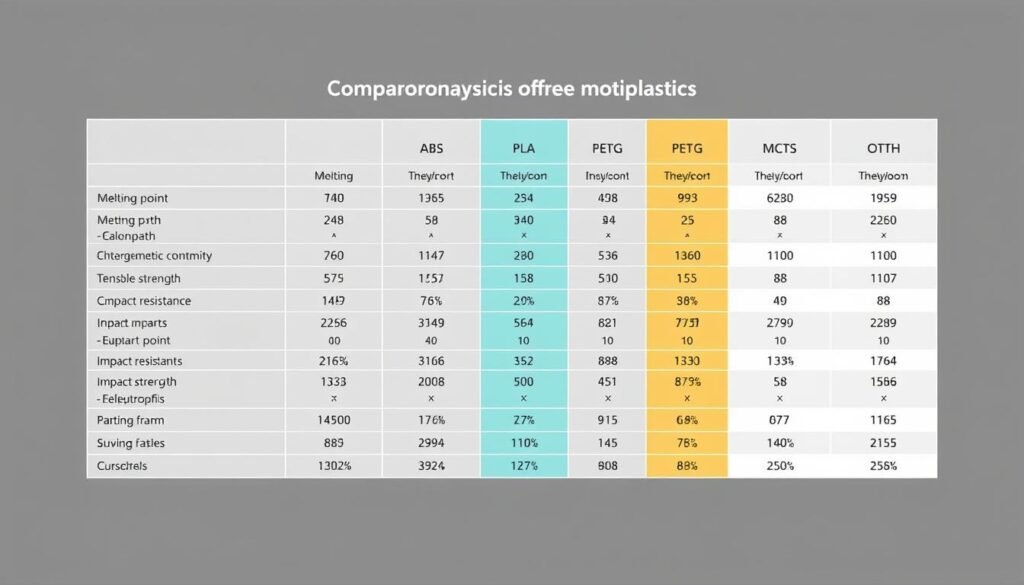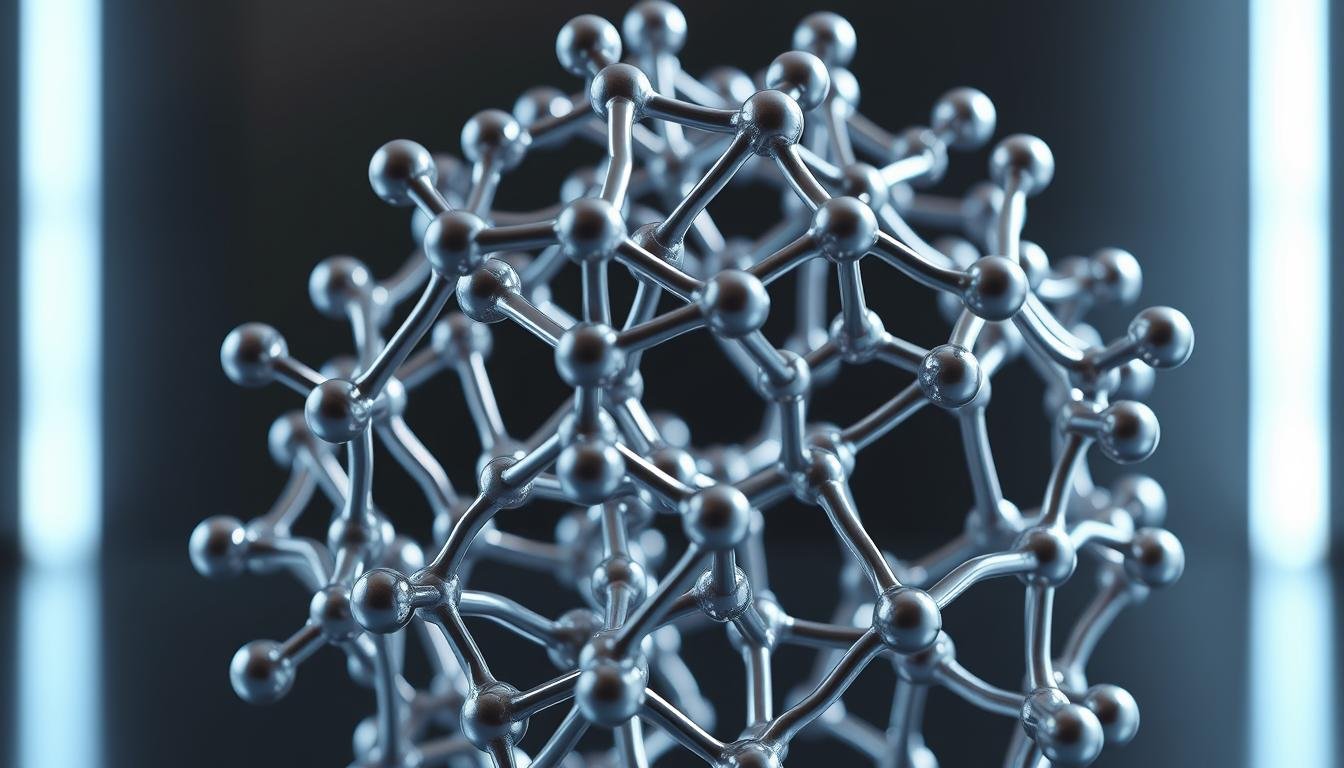Modern manufacturing relies on versatile thermoplastics that balance durability and processability. Acrylonitrile Butadiene Styrene (ABS) stands out for its unique blend of heat resistance, impact strength, and adaptability across production methods. Unlike crystalline polymers, this engineering-grade thermoplastic softens gradually between 200-250°F (93-121°C), enabling precise control during shaping processes.
Three key components define its performance: acrylonitrile enhances chemical stability, butadiene improves toughness, and styrene ensures smooth molding. This molecular design allows consistent operation in environments ranging from -4°F (-20°C) to 176°F (80°C), making it ideal for automotive interiors, electronic housings, and industrial prototypes.
Processing temperatures typically reach 210-250°C for techniques like injection molding or 3D printing. Engineers prioritize these thermal parameters to maintain structural integrity while preventing degradation. The material’s glass transition temperature of approximately 221°F (105°C) further guides its use in heat-sensitive applications.
From consumer gadgets to medical equipment, ABS delivers dimensional stability under mechanical stress and moderate thermal exposure. Its balanced properties continue to drive innovation in product design, quality assurance protocols, and manufacturing efficiency across U.S. industries.
Introduction to ABS Materials and Their Melting Behavior
In the realm of industrial polymers, few materials match the adaptability of acrylonitrile butadiene styrene. This thermoplastic combines three monomers through graft copolymerization, creating a molecular architecture that balances rigidity and flexibility. Each component plays a critical role: acrylonitrile boosts chemical resistance, butadiene adds impact strength, and styrene ensures smooth surface finishes.
Overview of Key Characteristics
The properties of this engineering polymer make it indispensable for automotive and electronics sectors. With a density of 1.0-1.05 g/cm³ and natural ivory coloring, it requires minimal post-processing. Key advantages include:
- High dimensional stability under mechanical stress
- Consistent performance between -4°F and 176°F
- Predictable softening behavior during manufacturing
Why Thermal Behavior Matters
Industrial applications demand precise control over temperature thresholds. The polymer’s moderate crystallinity allows gradual softening rather than abrupt melting, enabling reliable injection molding and extrusion. Automotive dashboards and computer housings benefit from this trait, as it prevents warping during production.
Nearly 50% of Western Europe’s output serves electrical and automotive industries. This reliance stems from the material’s ability to maintain structural integrity while accommodating efficient high-volume manufacturing processes. Engineers prioritize its thermal response to optimize cycle times and reduce energy costs.
Key Factors Influencing abs material melting point
Understanding thermal thresholds requires analyzing critical molecular interactions within polymer structures. Unlike crystalline plastics, engineering-grade thermoplastics exhibit distinct phase changes that dictate their industrial applications.
Glass Transition and Softening Explained
The glass transition temperature (Tg) marks where rigid polymers become flexible. At approximately 221°F (105°C), this engineering thermoplastic transitions from glass-like brittleness to rubbery elasticity. Manufacturers use Differential Scanning Calorimetry to pinpoint this critical threshold with 0.5°C accuracy.
Softening occurs gradually above Tg rather than through sudden melting. This behavior allows precise control during injection molding and extrusion processes. Engineers leverage this characteristic to prevent warping in automotive components and electronic enclosures.
Impact of Polymer Composition and Additives
Three monomers create unique thermal profiles through molecular synergy. Higher acrylonitrile content increases heat resistance, while butadiene enhances flexibility at lower temperatures. Flame retardants or UV stabilizers alter crystallization patterns, shifting transition ranges by 10-15°F in specialized grades.
Recent studies show additives can improve thermal stability by 22% in high-stress environments. Material scientists balance these modifications to maintain structural integrity across temperature cycles. Proper formulation ensures components withstand repeated thermal shocks without cracking or deformation.
Molecular Architecture and Mechanical Properties
The exceptional performance of engineering polymers stems from their molecular design. ABS achieves its reliability through a strategic blend of ordered crystalline zones and flexible amorphous regions. This dual-phase structure enables consistent mechanical properties across diverse operating conditions.
Crystallinity and Polymer Chain Dynamics
Crystalline regions act as molecular anchors, maintaining shape under stress. These ordered structures account for 30-40% of the polymer’s composition, delivering tensile strengths of 40-50 MPa. Amorphous areas absorb impacts through chain entanglement, achieving 200-600 J/m resistance ratings.
| Property | Crystalline Regions | Amorphous Regions |
|---|---|---|
| Structural Role | Dimensional stability | Impact absorption |
| Thermal Response | Maintains form until 221°F | Softens gradually |
| Mechanical Contribution | 40-50 MPa tensile strength | 200-600 J/m impact resistance |
Effects on Strength and Durability
This molecular teamwork prevents stress cracks during thermal cycling. Components retain color vibrancy for years because crystalline zones shield pigments from UV degradation. Automotive connectors and power tool housings leverage this durability through countless assembly cycles.
Engineers optimize designs using polymer chain dynamics data. The material’s 1.05 g/cm³ density allows lightweight yet robust constructions. Properly formulated grades withstand 500+ hours in 185°F environments without warping.
Thermal Analysis and Testing Methods for ABS
Advanced thermal analysis techniques reveal critical insights into polymer performance under heat stress. These methods help engineers predict how components behave in real-world conditions while optimizing manufacturing processes.
Differential Scanning Calorimetry Essentials
Differential Scanning Calorimetry (DSC) measures energy changes during heating or cooling cycles. Devices like the STA L82 track crystallization patterns and glass transition events with 0.5°C precision. This data helps manufacturers verify thermal stability and identify degradation thresholds.
Key DSC applications include:
- Mapping phase transitions between -40°F and 600°F
- Detecting impurities affecting heat resistance
- Validating batch consistency for automotive parts
Thermomechanical Analysis in Practice
Thermomechanical Analysis (TMA) evaluates dimensional changes under controlled temperature conditions. The DIL L75 instrument measures expansion rates and softening points critical for electrical enclosures. Combined with DSC results, TMA provides complete stability profiles.
Engineers use this data to:
- Prevent warping in injection-molded components
- Calculate safe operating ranges for medical devices
- Optimize 3D printing parameters for complex geometries
Standardized testing protocols ensure reliable predictions of long-term behavior. These methods form the backbone of quality assurance programs across U.S. manufacturing sectors.
Processing Techniques: Injection Molding and 3D Printing
Manufacturers leverage advanced processing methods to transform raw polymers into precision components. Both injection molding and additive manufacturing require strict thermal management to maintain structural integrity while achieving complex geometries.
Injection Molding Considerations
Temperature control dictates success in high-volume production. Melt temperatures between 190°C and 220°C ensure proper flow without degrading the polymer. Key factors include:
- Mold surfaces heated to 60-80°C for even cooling
- Injection pressures of 500-1,000 bar for detailed features
- Cycle times optimized to prevent sink marks
Automotive manufacturers often use multi-cavity molds, requiring precise cooling channel designs. Proper gate placement minimizes stress concentrations in load-bearing parts like dashboard panels.
Optimizing 3D Printing Parameters
Fused deposition modeling (FDM) demands layer adhesion strategies. Recommended settings include:
- Nozzle temperatures: 230-250°C
- Heated beds: 100-110°C to prevent warping
- Enclosed chambers maintaining 45-50°C ambient heat
Prototyping labs reduce interlayer separation by adjusting extrusion rates to 95-105% of nozzle diameter. Post-processing techniques like acetone vapor smoothing enhance surface quality for consumer electronics housings.
Comparative Analysis with Other Thermoplastics
Selecting the right polymer requires balancing thermal performance, mechanical strength, and cost efficiency. Engineers often weigh options like polycarbonate, polyethylene, and polystyrene against this engineering thermoplastic’s capabilities.

Performance Across Key Metrics
This polymer demonstrates unique advantages in heat resistance and structural reliability. Consider these critical comparisons:
| Polymer | Softening Range | Impact Resistance | Cost Efficiency |
|---|---|---|---|
| ABS | 221-257°F (105-125°C) | High | Moderate |
| Polycarbonate | 302°F (150°C) | Very High | High |
| Polystyrene | 194°F (90°C) | Low | Low |
| Polyethylene | 176°F (80°C) | Moderate | Very Low |
Polycarbonate outperforms in extreme temperature environments but increases production costs by 35-50%. Polystyrene and polyethylene soften at lower thresholds, making them unsuitable for components requiring dimensional stability above 194°F.
Automotive engineers frequently choose this material for dashboards and connectors. “The sweet spot lies in balancing thermal thresholds with manufacturing feasibility,” notes a Ford materials specialist. This approach ensures components withstand engine heat without requiring premium-grade polymers.
Electrical housing manufacturers benefit from the polymer’s resistance to deformation at operating temperatures where cheaper plastics fail. However, applications exceeding 250°F often necessitate polycarbonate despite its higher price point.
Industrial and Consumer Applications of ABS
From car interiors to smartphone cases, versatile polymers shape modern products. Over half of Western Europe’s production serves automotive and electrical sectors, where balanced performance meets demanding requirements. These engineering thermoplastics excel in environments needing reliability across temperature shifts and physical stress.
Uses in Automotive, Electrical, and Household Sectors
In vehicle manufacturing, engineers leverage the polymer’s thermal stability for dashboards, trim pieces, and wheel covers. These components maintain structural integrity despite fluctuating cabin temperatures and UV exposure.
The electrical industry relies on its impact resistance for protective housings in devices like routers and power tools. Flame-retardant grades meet safety standards in switchboards and industrial enclosures.
Household appliances benefit from its durability, seen in vacuum cleaners and refrigerator components. Toy manufacturers value its safety and color retention, ensuring long-lasting products under regular use.
From precision automotive parts to everyday gadgets, this thermoplastic’s adaptability drives innovation. Its combination of strength, processability, and cost-effectiveness makes it a cornerstone in multiple industries. Discover more about ABS’s unique properties and industrial applications.
